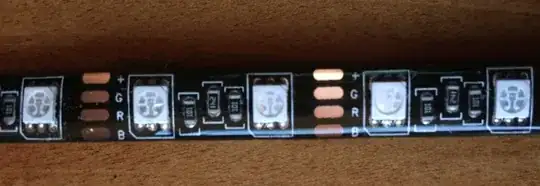I have a 5V LED strip that used to be behind a TV powered by its USB port - but it got mangled by the dog - and I can definitely use the scraps for a raspberry pi project. I have done my research prior to posting but most of the topics online are referring to driving a 12V LED strip.
I have Raspbian Jessie With Pixel & Pi 3 Model B
Here is the LED strip I have: https://amzn.com/B01HTEXN76
And in case of link rot - here is a picture:
I only want to use 10 segments and each be controllable via PWM. From the research I've done I've read that LEDs can use up to 60mA each, but I don't know if people just take that into consideration for 12V strips only or not.
I was wondering if someone could help me with the wiring diagram.
The other topics stated buying a DC power jack etc but I don't need one cause I have a 5V LED Strip. And since it's 5V LED Strip and my power supply for my Raspberry Pi is 5V & 4.8A (2x 2.4A USB ports) see here on Amazon: https://amzn.com/B00QTE09SY
I thought I could just used the chewed up USB cord, cut the chewed up part off (the part of the led strip that had a controller you can see it the Amazon links picture) and wire the ground to the Raspberry Pi ground, and then proceed with wiring the positive wire to the 5V line of the LED strip.
Im guessing I would have to set it up somewhat like this: http://popoklopsi.github.io/RaspberryPi-LedStrip/#!/
However, I wont need the power jack because I have a chewed up USB cord that I can just cut and rewire with and plug that USB end into my power supply.
So my question is will I need MOSFETs if Im only driving up to 10 LED's with the same voltage as raspberry pi? Or can i just use a diode to block back current? If so, which ones would you recommend?
Thanks for you understanding and patience with my Pi noobiness
